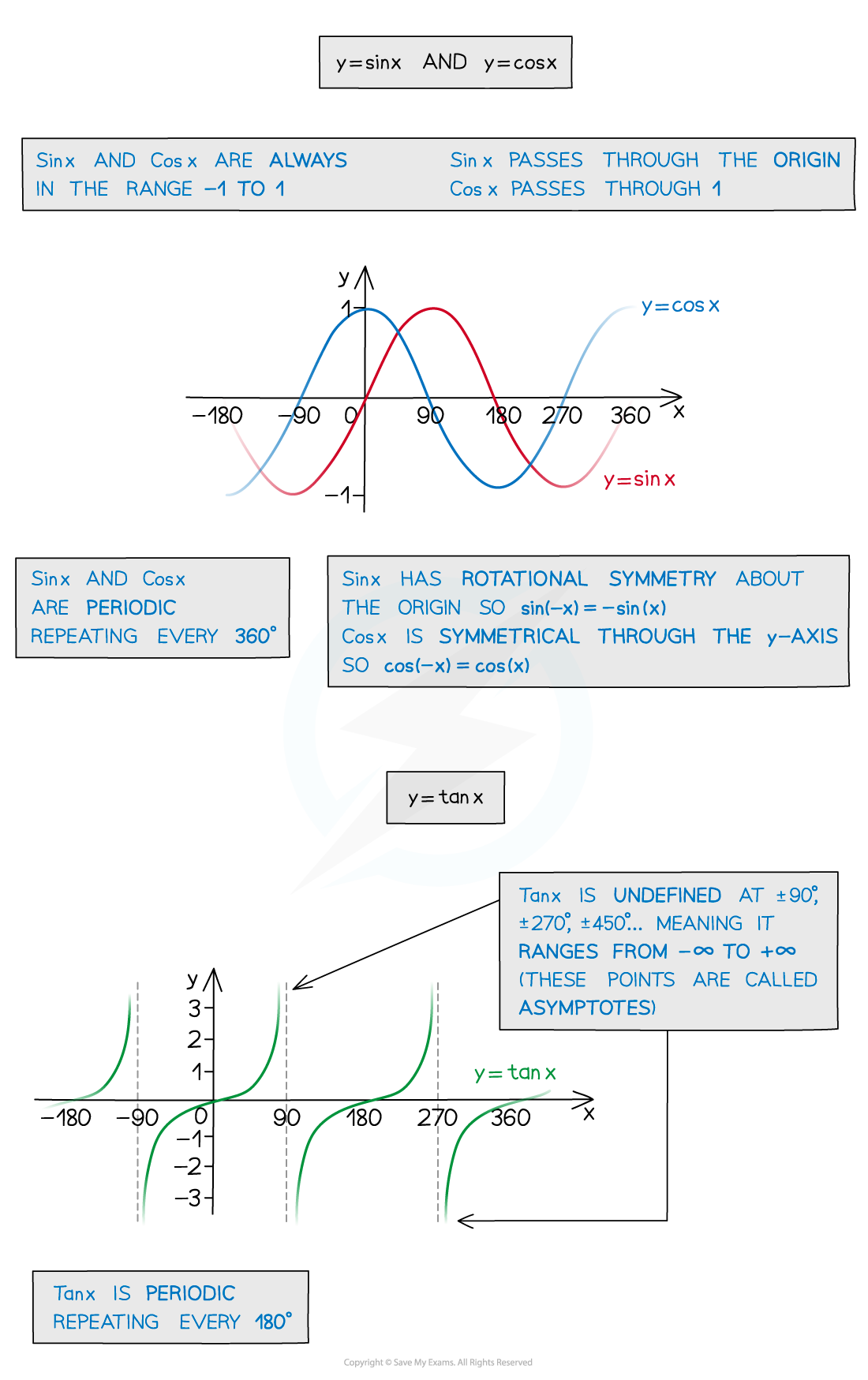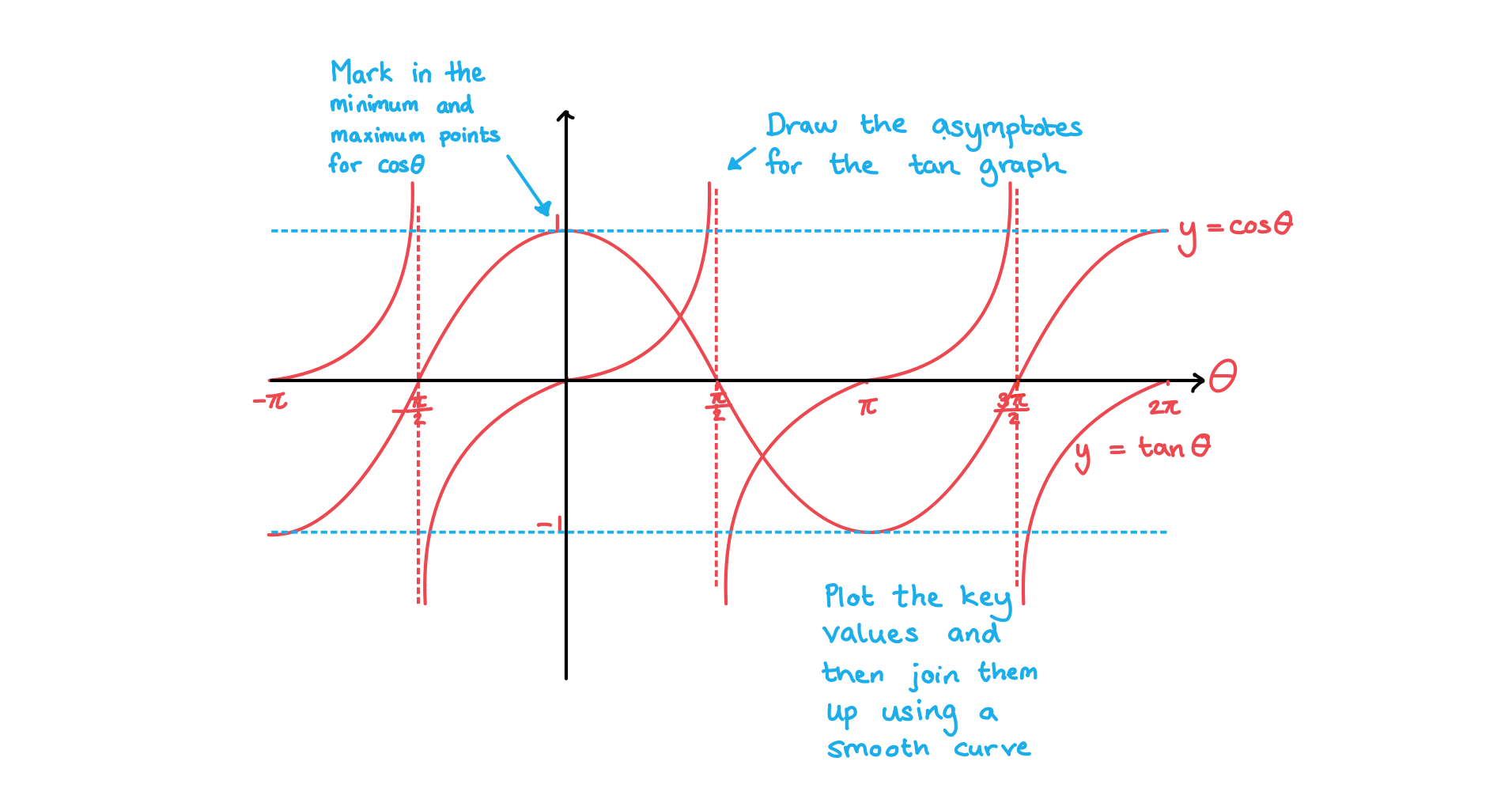Graphs of Trigonometric Functions
What are the graphs of trigonometric functions?
- The trigonometric functions sin, cos and tan all have special periodic graphs
- periodic means the graphs repeat over certain intervals
- You need to know their properties and how to sketch them for a given domain
- You must be able to do this for either degrees or radians
- Sketching the trigonometric graphs can help to
- Solve trigonometric equations and find all solutions
- Understand transformations of trigonometric functions
What are the properties of the graphs of sin x and cos x?
- The graphs of sin x and cos x are both periodic
- They repeat every 360° (2π radians)
- The angle measurement will always be on the x-axis
- Either in degrees or radians
- The corresponding value of the function will always be on the y-axis
- You need to know the domain and range of sin and cos
- Domain:
- I.e. all real number values of x
- Including 'angles' less than 0° and greater than less than 360°
- Range:
- sin and cos can never take values greater than 1 or less than -1
- The amplitude of the graphs of sin x and cos x is 1
- Domain:
- The graphs of sin x and cos x are translations of one other
- sin x passes through the origin (0, 0)
- translate sin x 90° (
radians) to the left to get cos x
- translate sin x 90° (
- cos x passes through (0, 1)
- translate cos x 90° (
radians) to the right to get sin x
- translate cos x 90° (
- sin x passes through the origin (0, 0)
What are the properties of the graph of tan x?
- The graph of tan x is periodic
- It repeats every 180° (π radians)
- The angle measurement will always be on the x-axis
- Either in degrees or radians
- The graph of tan x is undefined at ± 90°, ± 270° etc
- There are vertical asymptotes at these points on the graph
- In radians this is
radians,
radians, etc
- You need to know the domain and range of tan
- Domain:
(degrees) or
(radians)
- I.e. all values (positive or negative) except where the asymptotes appear
- Range:
- tan x can take any real number value
- Domain:

How do I sketch trigonometric graphs?
- You may need to sketch a trigonometric graph
- so you will need to remember the key features of each one
- The following steps may help you sketch a trigonometric graph
- STEP 1
Check whether you should be working in degrees or radians
-
- Check the interval given in the question
- If you see π in the given interval then work in radians
- STEP 2
Label the x-axis in multiples of 90°- Or multiples of
if you are working in radians
- Make sure you cover the entire given interval on the x-axis
- Or multiples of
- STEP 3
Label the y-axisfor sin x or cos x
- No specific points on the y-axis for tan x
- STEP 4
Draw the graph- Knowing exact values will help with this
- e.g. sin(0) = 0 and cos(0) = 1
- Mark the important points on the axis first
- If you are drawing the graph of tan x
- put the asymptotes in first
- If you are drawing sin x or cos x
- mark where the maximum and minimum points will be
- Try to keep the symmetry (and rotational symmetry) as you sketch
- This will help when using the graph to find solutions
- Knowing exact values will help with this
Exam Tip
- Sketch all three trig graphs on your exam paper so you can refer to them as many times as you need to!
Worked example
Sketch the graphs of and
on the same set of axes in the interval
. Clearly mark the key features of both graphs.



